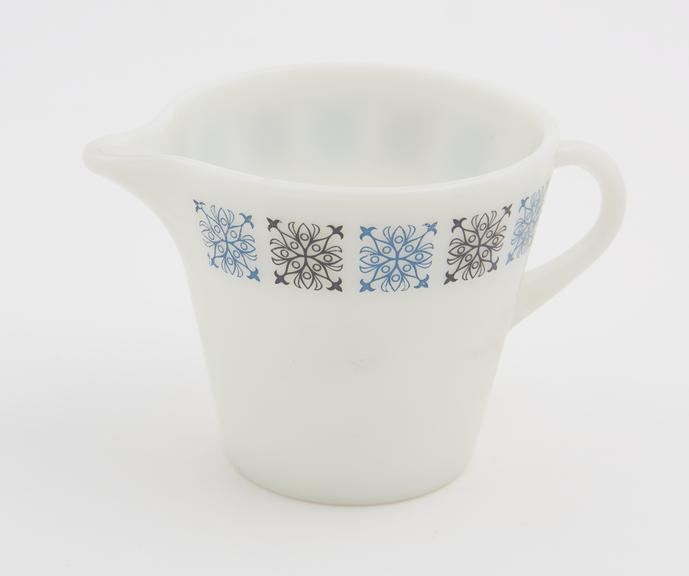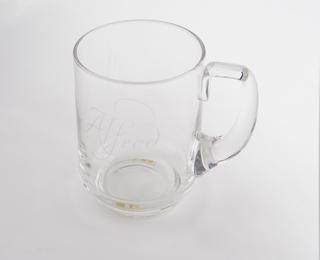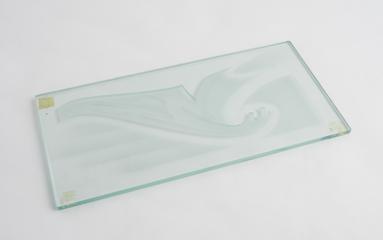
Pyrex milk jug in Chelsea Design.
- Made:
- 1967-1971 in Sunderland

Pyrex milk jug in Chelsea Design.
This milk jug (alongside the other Pyrex dinnerware in the collection) tells the story of Pyrex ‘livingware’ – which as a product is an output of, but also part, of a movement towards the invention of more durable materials at the start of the 20th century. Pyrex is heat-resistant glassware. It is a global product not just in its consumption but development, crossing from Europe to the USA and back again in its conception, development, and manufacture.
Whilst it was initially marketed as high end (adverts showed a maid using the cookware), it was deemed too expensive. However, Corning (Pyrex’s parent company) was able to capitalise on the emergence of the ‘home economics’ industry and ‘clean living’ ideals after World War II to secure its popularity. The company hired scientist and home economist , Lucy Maltby, to establish a test kitchen to evaluate and advocate Pyrex products. Her work influenced design changes (such as making the cake pans smaller so two could sit side by side in a conventionally sized oven) and had such an impact as to coin the mantra ‘What does Lucy think?’
Pyrex also responded to the evolution of the kitchen into a communal living space: henceforth the colourful designs which look good whilst cooking, serving, and dining.
Whilst newly produced Pyrex continues to be popular today, there is also a nostalgia to the product as a collector’s item, with websites dedicated to determining the rarity and value of ‘vintage’ collections, demonstrating the emotional connection to the product.
The Chelsea design tells the story of Pyrex production in Britain. It was produced by JAJ (James A Jobling) the company which from 1921 obtained the patent to manufacture Pyrex products in their Sunderland Factory for 52 years. JAJ saw huge expansion through the production of Pyrex, reflecting its growing popularity. When the licence expired in 1973, Corning took over the company and the stamp on Chelsea designed products became ‘Pyrex England’. The objects we currently store have the JAJ stamp, which signifies they were made in Sunderland.
The Chelsea design is one of the longest running (produced from 1968 until the 1980s). This means it is cross-generational; it is the epitome of a product and print design that would have been familiar to and in the kitchens of grandparents, parents, and their children. The slightly squarer edging to the cups we store suggest these are a later version of the Chelsea range.




